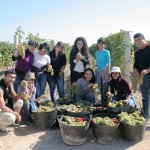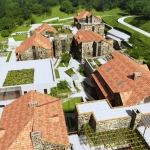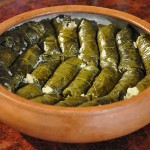It is already winter… Holiday preparations start along with coming of December; and all are enveloped by spirits of Christmas and anticipations for fairy tales. This comes to say that New Year is approaching. The Armenians formerly used to celebrate New Year in spring, along with the equalizing of day and night in March. By that time the holiday was called “Navasard”. Then people began celebrating the holiday in summer.
Later Navasard was being celebrated at the beginning of autumn during the harvest. The tradition of celebrating New Year in winter was established in Armenia not long ago, when the Armenians began celebrating this holiday on January 1 as in all Western countries.
It should be mentioned that in pagan times the Armenians worshiped God Amanor whose name means New Year and who enjoyed great love of people. He was considered to be “the source of the new harvest”. His worship coincided with the end of July or the beginning of August just when the fruits were ripening. All the feasts were solemnly celebrated in one of the ancient Armenian centers of worship, in Bagavan.
Here is how New Year was being celebrating when it was transferred to winter. According to the tradition on the eve of the holiday the fire should have been bright in the hearth all night long until dawn. It was accepted to bring a big log to home, and the host of the house should have been watching that the fire was not put out during all the night. In the morning the ashes were sprinkled in the fields; this was considered to make the soil more fertile.
The remains of the timber were kept to burn on January 5, on the eve of Christmas. Transition from the old to the new has always considered to be mysterious and full of secrets. People believed that during transferring to New Year all the flawing waters take a moment to stop and change into gold, and those who witnessed that moment were surely considered to become rich in the coming year. For that all boys and girls went to the river to fill the pitchers with water and believed that it would change into gold. New Year was also considered to be the most favorable time for various previsions. In the night of New Year the hostess used to tie red ribbons on a sacred tree. This was done to provide the prosperity of the house in the coming year before the tradition of decorating Christmas tree was adopted. New Year dishes also had magical goal. It was accepted to eat the soup called “anushapur” which means “sweet soup” and Lenten dolma. The sweet soup was made from wheat, rice, corn, dry fruits, raisins, almonds and walnuts. Lenten dolma was being prepared from beans, lentils, rice and other components, the number of which should be at least seven.
During New Year celebration the hostess gathered all the relatives together making prediction for the coming year. For this, the hostess used to bake ritual biscuits which had various images to symbolize heavenly lights, fauna and flora. People were portrayed according to their professions. For example, the symbol of the merchant was a purse. The images of different tools had a special place in baking biscuits. And the hostess made predictions according to each ritual biscuit depending on how it was baked. If the biscuit was not swelled, the person was considered to lack success in the coming year. The hostess used to bake another cake. It was big round sweet bread called gata, which was also known as “Tari Bread” (bread of the year). A bean was usually put in that bread to learn who will be the most successful person of the year. And the sweet bread, gata, was
being distributed to all the members of the family.
The best traditions of New Year celebration are preserved to our days, and all people, both adults and children, prepare for the celebration of the holiday full of new expectations for happiness and New Year miracles.
New Year Expectations
Back To Top










